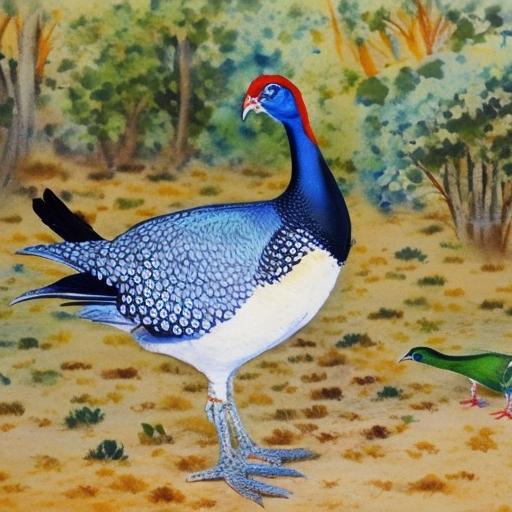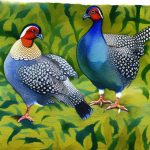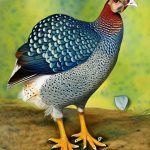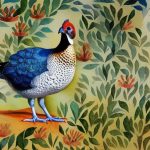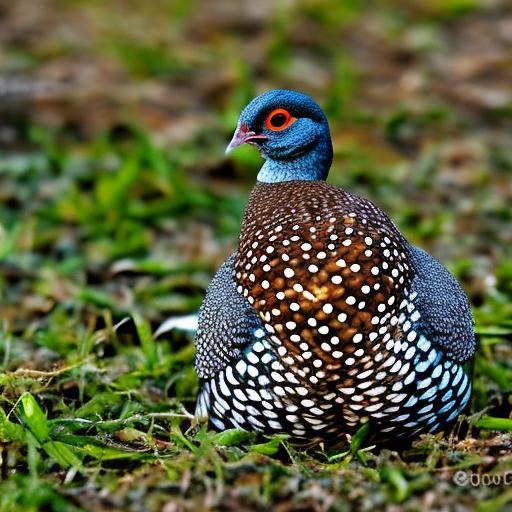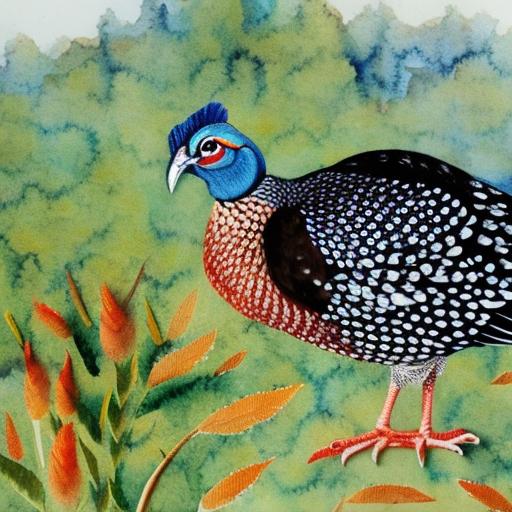Guinea fowl breeding season in Australia typically occurs during the spring and summer months, which is from September to February. During this time, guinea fowl are more active and exhibit mating behaviors as they prepare to breed. Guinea fowl are known for their unique and fascinating breeding behaviors, making them an interesting species to breed. As the breeding season approaches, it is important for breeders to understand the behavior of guinea fowl, the factors that can affect their breeding, and the necessary tips for successful breeding. Additionally, health and nutrition considerations play a crucial role in ensuring the well-being of guinea fowl during the breeding season. Proper management of the breeding season is also essential for the success of guinea fowl breeding in Australia. In this article, we will delve into the various aspects of guinea fowl breeding season in Australia, providing valuable insights and tips for breeders to ensure a successful breeding season.
Key Takeaways
- Guinea fowl breeding season in Australia typically occurs during the warmer months, from spring to early autumn.
- Guinea fowl are known for their unique breeding behavior, including communal nesting and loud vocalizations during courtship.
- Factors affecting guinea fowl breeding in Australia include environmental conditions, predator presence, and the availability of suitable nesting sites.
- Successful guinea fowl breeding in Australia requires providing proper housing, nutrition, and minimizing stress during the breeding season.
- Health and nutrition considerations for guinea fowl breeding season include providing a balanced diet, access to clean water, and monitoring for common health issues such as parasites and respiratory infections.
Understanding the Breeding Behavior of Guinea Fowl
Guinea fowl are known for their complex and fascinating breeding behavior. During the breeding season, male guinea fowl, also known as cocks, display elaborate courtship behaviors to attract females, or hens. These behaviors include strutting, puffing up their feathers, and making loud calls to impress the females. Once a male successfully attracts a female, they will engage in a courtship dance, where the male will circle around the female while calling and displaying his feathers. If the female is receptive, she will crouch down and allow the male to mount her for mating. After mating, the female will lay her eggs in a secluded nest, typically on the ground, and will incubate them for about 26-28 days. The male may also assist in guarding the nest and protecting the eggs from predators. Understanding these breeding behaviors is crucial for breeders to provide a suitable environment for guinea fowl to mate and raise their young.
In addition to courtship behaviors, guinea fowl also exhibit strong flock dynamics during the breeding season. They are social birds that form strong bonds within their flock, and these dynamics can influence their breeding behavior. It is common for guinea fowl to mate within their flock, and they may form monogamous pairs for the breeding season. However, there may also be competition among males for access to females, leading to displays of aggression and dominance within the flock. Understanding these social dynamics is important for breeders to manage their guinea fowl flock effectively during the breeding season. By providing adequate space and resources for the flock, breeders can minimize conflicts and ensure a harmonious breeding environment for their guinea fowl.
Factors Affecting Guinea Fowl Breeding in Australia
Several factors can affect guinea fowl breeding in Australia, including environmental conditions, predator pressure, and flock dynamics. The availability of suitable nesting sites is crucial for guinea fowl to successfully breed. In their natural habitat, guinea fowl prefer to nest on the ground in secluded areas with dense vegetation for protection. However, in a domestic setting, breeders must provide nesting boxes or secluded areas within the enclosure to mimic this natural nesting behavior. Additionally, environmental factors such as temperature and humidity can impact the breeding success of guinea fowl. Extreme heat or cold can stress the birds and affect their reproductive capabilities. Therefore, it is important for breeders to provide a comfortable and stable environment for their guinea fowl during the breeding season.
Predator pressure is another significant factor that can affect guinea fowl breeding in Australia. Guinea fowl are vulnerable to predation, especially during the breeding season when they are focused on nesting and raising their young. Predators such as foxes, snakes, and birds of prey pose a threat to guinea fowl and their eggs. To mitigate this risk, breeders must implement effective predator control measures, such as secure enclosures, predator-proof fencing, and regular monitoring of the flock. By minimizing predator pressure, breeders can create a safer environment for guinea fowl to breed and raise their offspring.
Flock dynamics also play a crucial role in guinea fowl breeding success. As mentioned earlier, social interactions within the flock can influence mating behaviors and reproductive success. Dominant males may monopolize access to females, leading to unequal mating opportunities within the flock. To address this issue, breeders can consider maintaining a balanced sex ratio within the flock and providing adequate space and resources to reduce competition and aggression among males. By understanding and managing these factors, breeders can create an optimal environment for guinea fowl breeding in Australia.
Tips for Successful Guinea Fowl Breeding in Australia
To ensure successful guinea fowl breeding in Australia, breeders can implement several tips and strategies to support their birds during the breeding season. Providing suitable nesting sites is essential for guinea fowl to lay and incubate their eggs. Breeders should offer nesting boxes or secluded areas with soft bedding material to encourage nesting behavior. It is also important to minimize disturbances around the nesting sites to reduce stress on the birds.
Maintaining optimal environmental conditions is crucial for supporting guinea fowl breeding. This includes providing adequate shelter from extreme weather conditions, ensuring good ventilation in the coop or enclosure, and offering a balanced diet to support reproductive health. Breeders should also monitor the flock regularly for signs of stress or illness and provide appropriate veterinary care when needed.
Effective predator control measures are essential for protecting guinea fowl and their offspring during the breeding season. Breeders should secure enclosures with predator-proof fencing, install motion-activated lights or alarms to deter predators, and consider using guard animals such as dogs or geese to help protect the flock. Regular monitoring of the surrounding area for signs of predator activity is also important for early intervention.
Managing flock dynamics is another key aspect of successful guinea fowl breeding. Breeders can promote harmonious interactions within the flock by providing ample space, enrichment activities, and multiple feeding and watering stations to reduce competition. Maintaining a balanced sex ratio within the flock can also help minimize aggression and ensure equal mating opportunities for all birds.
Health and Nutrition Considerations for Guinea Fowl Breeding Season
During the breeding season, guinea fowl have increased nutritional requirements to support egg production and overall reproductive health. Breeders should provide a well-balanced diet that includes high-quality poultry feed supplemented with grains, seeds, fruits, and vegetables. It is important to offer a diet that is rich in protein, vitamins, and minerals to support egg development and fertility.
In addition to a nutritious diet, access to clean water is essential for guinea fowl during the breeding season. Breeders should ensure that fresh water is readily available at all times, especially as hens may increase their water intake while laying eggs. Regularly cleaning and refilling water containers will help prevent contamination and support the overall health of the flock.
Maintaining good hygiene practices within the coop or enclosure is important for preventing disease outbreaks during the breeding season. Breeders should regularly clean nesting boxes, remove soiled bedding material, and keep the overall living area clean and dry. This will help reduce the risk of bacterial or parasitic infections that can impact the health of guinea fowl and their offspring.
Regular health checks by a qualified avian veterinarian are recommended during the breeding season to monitor the overall health of the flock and address any potential health issues promptly. Vaccinations, parasite control, and routine examinations can help ensure that guinea fowl remain healthy and productive throughout the breeding season.
Managing Guinea Fowl Breeding Season in Australia

Effective management of guinea fowl breeding season in Australia requires careful planning and attention to detail. Breeders should start by preparing their facilities well in advance of the breeding season, ensuring that nesting sites are available and predator control measures are in place. Monitoring environmental conditions such as temperature and humidity will help breeders make any necessary adjustments to support optimal breeding conditions.
During the breeding season, regular observation of guinea fowl behavior is important for identifying mating pairs, monitoring nesting activity, and addressing any conflicts within the flock. Breeders should also keep detailed records of egg production, fertility rates, and hatchability to track the overall success of their breeding program.
Providing supplemental lighting in the coop or enclosure can help stimulate reproductive activity in guinea fowl during the shorter daylight hours of winter. This can be particularly beneficial for encouraging early egg production and extending the breeding season.
After hatching, providing appropriate care for guinea fowl chicks is essential for their survival and growth. This includes offering specialized chick feed, maintaining warm brooding temperatures, and protecting them from predators and environmental stressors.
Conclusion and Future Considerations for Guinea Fowl Breeding in Australia
In conclusion, guinea fowl breeding season in Australia presents unique challenges and opportunities for breeders looking to raise these fascinating birds. Understanding the complex breeding behavior of guinea fowl, managing environmental factors that can affect breeding success, implementing effective predator control measures, providing proper nutrition and healthcare, and managing flock dynamics are all essential components of successful guinea fowl breeding.
Looking ahead, future considerations for guinea fowl breeding in Australia may include further research into optimizing breeding techniques, developing specialized breeding programs for specific traits or purposes, and exploring sustainable management practices that support both conservation efforts and commercial production.
By continuing to expand our knowledge of guinea fowl behavior and biology, as well as sharing best practices among breeders and researchers, we can work towards ensuring a thriving future for guinea fowl breeding in Australia. With careful attention to their unique needs and behaviors, guinea fowl can continue to be valued members of our agricultural landscape and provide both enjoyment and economic opportunities for breeders across the country.
As the guinea fowl breeding season approaches in Australia, it’s essential to ensure that your coop is ready to accommodate the new arrivals. If you’re looking to upgrade your coop or build a new one, you might find inspiration in this article about turning a shed into a chicken coop. The tips and ideas shared in this article can help you create a comfortable and functional space for your guinea fowl during this crucial time.
FAQs
What is the breeding season for guinea fowl in Australia?
The breeding season for guinea fowl in Australia typically occurs during the spring and summer months, from September to February.
How long does the breeding season last for guinea fowl in Australia?
The breeding season for guinea fowl in Australia can last for several months, with peak breeding activity occurring during the warmer months.
What are the breeding behaviors of guinea fowl during the breeding season?
During the breeding season, guinea fowl engage in courtship displays, mating rituals, and nest building. Males may also display aggressive behavior towards other males to establish dominance and access to females.
How can I encourage successful breeding in my guinea fowl during the breeding season?
To encourage successful breeding in guinea fowl during the breeding season, provide a suitable nesting area with privacy and protection from predators. Ensure that the birds have access to a balanced diet and clean water to support their reproductive health.
Are there any specific considerations for breeding guinea fowl in Australia?
In Australia, it is important to consider the local climate and weather conditions when breeding guinea fowl. Providing adequate shelter and protection from extreme temperatures is essential for the health and well-being of the birds during the breeding season.
Meet Walter, the feathered-friend fanatic of Florida! Nestled in the sunshine state, Walter struts through life with his feathered companions, clucking his way to happiness. With a coop that’s fancier than a five-star hotel, he’s the Don Juan of the chicken world. When he’s not teaching his hens to do the cha-cha, you’ll find him in a heated debate with his prized rooster, Sir Clucks-a-Lot. Walter’s poultry passion is no yolk; he’s the sunny-side-up guy you never knew you needed in your flock of friends!

